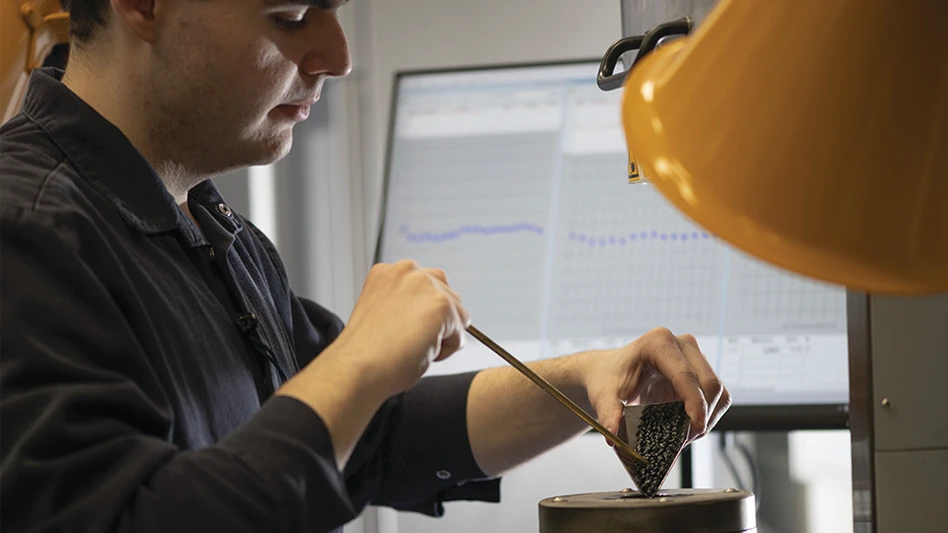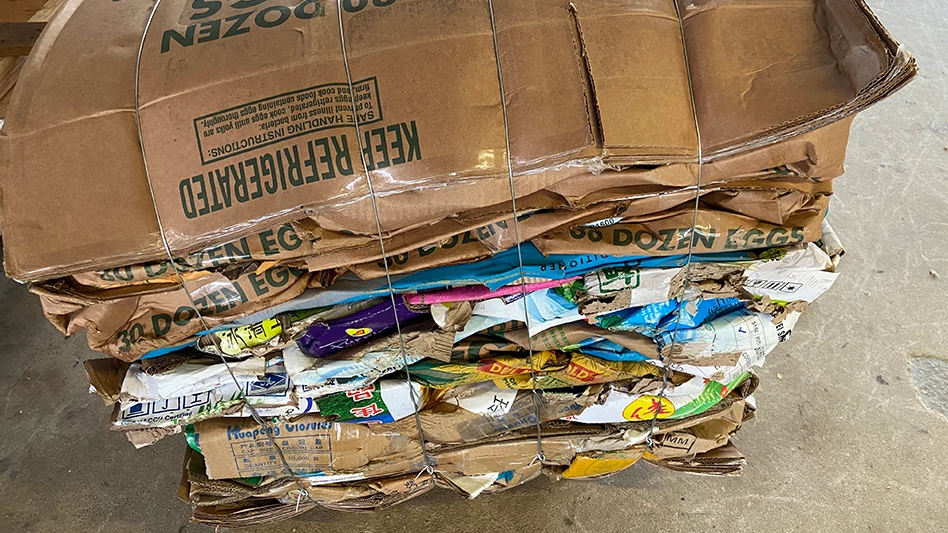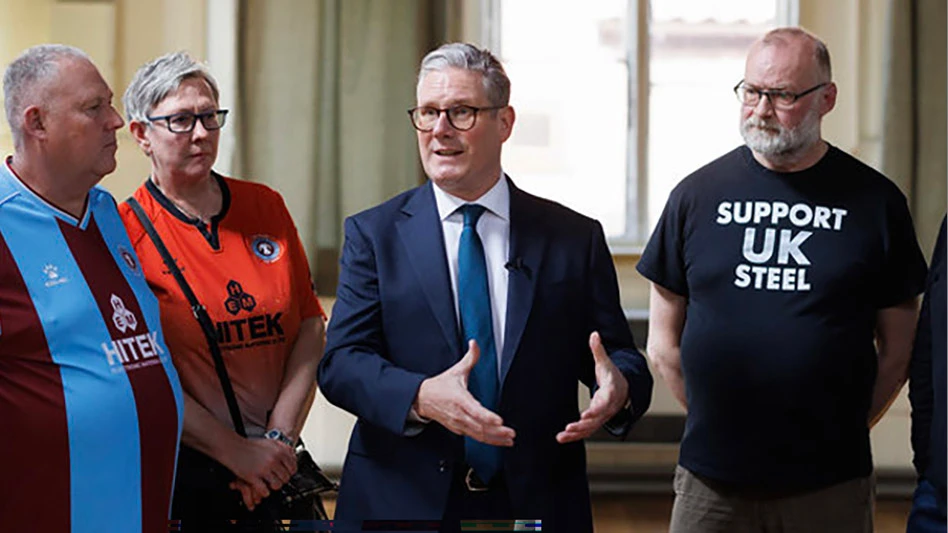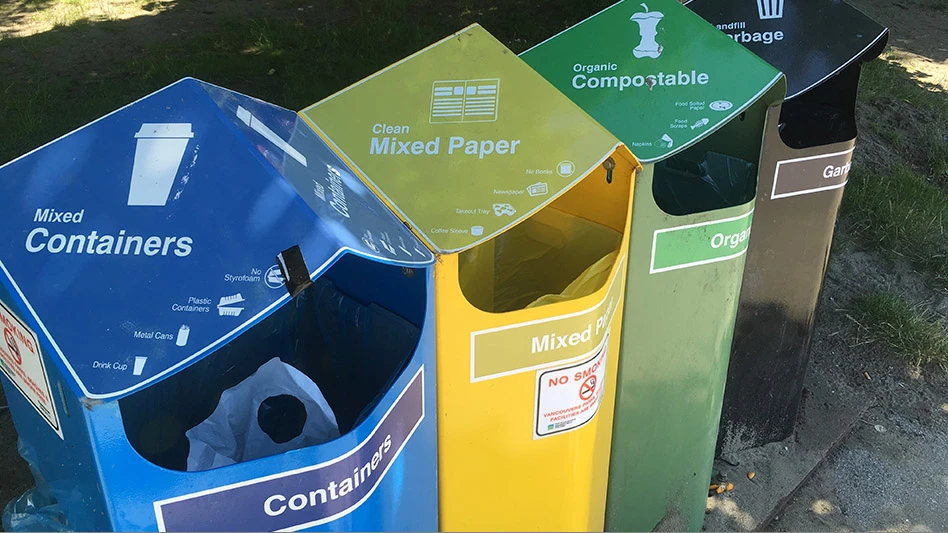 Gary Denis from A-1 Auto Parts and his business partner are building a bio-retention pond to handle stormwater at their business’ location. Gary Denis from A-1 Auto Parts and his business partner are building a bio-retention pond to handle stormwater at their business’ location. |
Gary Denis was born at Put-in-Bay on an island in Lake Erie and he fishes the lake for walleye, perch and bass. When Denis took ownership of A-1 Auto Parts in Toledo, Ohio, nine years ago, he was working on land in the largest watershed that drains into the Great Lakes. Denis and his partner, Shane Yoder, took steps right away to establish a clean operation. They say they follow best management practices and drain all fluids indoors, collect lead weights from tire rims, collect mercury switches and dispose of hazardous waste correctly. But they volunteered to do more. Along with more than a dozen other recycling yards in the city, they joined Toledo's new Salvage & Stewardship program.
Voluntary Stewards
The city of Toledo started the voluntary program in 2011 through a grant from the U.S. Environmental Protection Agency (EPA) Great Lakes Restoration Initiative to help auto salvage and recycling yards take extra steps to protect water quality. The city has a concentration of such facilities in the area. An estimated 184 acres are being operated as auto salvage, metal recycling and scrap yards within the city limits. Many sites, including A-1 Auto Parts, are clustered in industrial areas near the Ottawa River.
 A new bio-swale at R&M Recycling, showing native plants, permeable soil and mulch, protected from traffic by Jersey barriers. The Ottawa River is on the other side of the fence. A new bio-swale at R&M Recycling, showing native plants, permeable soil and mulch, protected from traffic by Jersey barriers. The Ottawa River is on the other side of the fence. |
That river was recently the site of a major cleanup operation. The EPA removed tons of sediment that had been contaminated by PCBs (Polychlorinated biphenyls), heavy metals and other leftovers of the region's industrial history. With this restoration complete, city officials and business people are focusing on keeping new contaminants out of the waterways.
The goal of Salvage & Stewardship is to, first, minimize the amount of petroleum products, metals, antifreeze and mercury that get into the soil and, then, to hold stormwater and treat it naturally on site rather than let rain and snowmelt carry chemicals into storm sewers and rivers.
The Toledo recycling facilities are mostly locally owned by family groups who have expressed a commitment to the health of the region. Rada and Sons is typical. The yard has been in business since 1988, operated by owner Rada Eltatawy. Rada is an Egyptian immigrant who says he takes environmental issues seriously. "It's our city," he says of his adopted Toledo. "It bothers me when people don't take care of the Earth."
Marc Gerdeman, city of Toledo environmental specialist, is leading the program. Working with consultant Tetra Tech, based in Pasadena, Calif., and regional planning group Toledo Metropolitan Area Council of Governments (TMACOG), he visited and enlisted Rada and other salvage yard operators to join the program.
He says he was impressed by the welcoming attitude of the owners and operators. "These guys are already doing great work keeping material out of landfills and finding a second use for discards. They are good citizens who want to do the right thing."
By enlisting the property operators in the Salvage & Stewardship program, Gerdeman and partners in the project are hoping to demonstrate a low-cost, high-payoff program that can be replicated in other cities and watersheds.
Action Plan
The yard operators agreed to have stormwater engineers and specialists visit their facilities to look at the types of material on hand, how stormwater was being managed and their proximity to creeks and rivers.
Next, the team working for the Salvage & Stewardship program created a core plan for each facility. All of the plans outline good housekeeping measures that are designed to capture potential contaminants and provide protection from spills. The plans also provided the yards with help sheets describing specific strategies to address stormwater runoff.
|
PROTECTION NEEDED Toledo is at the southeast corner of Lake Erie, a low, nearly flat area once known as the Great Black Swamp. The region is still prone to flooding and contains a wealth of rivers, streams and ditches, all flowing into Lake Erie. The lake is the source of drinking water for Toledo and other communities in the region as well as home to some of the most active fishing in the Great Lakes. All stormwater control efforts are directed toward preserving the health of the lake. The Maumee River, which empties into Lake Erie near downtown Toledo, drains the largest watershed that goes to the Great Lakes. Toledo has a high concentration of metal and auto recycling facilities. The city is part of the Detroit area automotive industry, with tool and die shops and parts suppliers. It is also strategically located along freight rail lines and close to steel plants. |
Because of the yards' proximity to waterways and storm drains, the team recommended structural, or treatment, strategies for two of the yards. These facilities—A-1 Auto Parts and R&M Recycling, right across the street—were given free engineering plans for a bio-swale and a bio-retention area.
A swale or retention area holds water for a time in a pond-like area to allow stormwater to absorb into the soil. Typically, the structure is graded to catch running stormwater. It is lined with gravel, a geotextile layer, topsoil and mulch, and is planted with native species that withstand wet conditions. Additional features include stones or rubble to slow the flow of water and to filter out larger particles in the runoff.
"The bio-retention design is well-established as a pollution control measure," says Stacey Durley of Tetra Tech. "We know that chemical and biological processes occur in a bio-retention system that change potentially dangerous chemicals. Filtration, sorption, degradation and decomposition work to remove, sequester or modify chemicals. In addition, the native plants in the swale take up potentially harmful chemicals through their roots and convert them into biomass."
Practical Measures
At R&M Recycling, Willettt and his team built a long bio-swale between an entrance drive and a tributary of the Ottawa River. Water was already pooling there, and the site was ideal for a treatment structure. Using plans designed by Tetra Tech engineers, Willettt built the swale using tools and materials from his recycling yard. He graded the site by dragging an I-beam, distributed topsoil using a roll of old fencing and busted up some bricks to slow the flow of water as it enters the swale. He also built a water flue out of scrap metal.
"David is showing that protecting water can be low-cost and practical," Gerdeman says. "If he were to hire design engineers and professional landscapers, a bio-swale like this could cost more than $20,000," he adds.
He adds, "By using our plans and doing it himself, David's only expenses were soil, mulch and plants."
As the water-loving plants grow roots and the R&M site becomes established, stormwater engineers will test water as it enters the swale and again at a weir (small barricade) at the lower end of the swale as water leaves.
At A-1 Auto Parts, the partners are building a bio-retention pond around an existing elevated stormwater drain. The design will hold and treat stormwater at a level lower than the drain entrance during normal wet conditions. This allows the stormwater to be treated naturally rather than letting untreated stormwater run directly through the sewer to the Ottawa River.
 Rada and Souheir Eltatawy operate Rada & Sons Enterprises. Two of the couple’s four sons work in the family business. Rada and Souheir Eltatawy operate Rada & Sons Enterprises. Two of the couple’s four sons work in the family business. |
Recognizing Participation
"This is a solid group of owners with a commitment to Toledo," Gerdeman says. "They are making a difference in water quality acre by acre, and they deserve some recognition."
The Salvage & Stewardship project will recognize those companies that participate in the program and take steps recommended in the core plan provided to them. Participants will receive an annual certificate and are entitled to use the Salvage & Stewardship logo on their signage and on their websites.
Gerdeman and his partners are optimistic the Salvage & Stewardship model will result in cleaner water. "Yard operators here were already motivated and interested in running a clean and safe operation. Now they have a lot more information about specific procedures and know where to get help. Toledo is a model for how to create partners to protect water," Gerdeman says.
The author is a writer and associate editor for the Toledo Metropolitan Area Council of Governments. She can be contacted at mccarthy@tmacog.org.

Explore the January 2012 Issue
Check out more from this issue and find your next story to read.
Latest from Recycling Today
- Acerinox names new North American Stainless CEO
- Greenwave closes 2024 books with red ink
- Steel Dynamics nets $217 million on record shipments
- Massive Chinese steelmaking rebound recorded in March
- LME looks into sustainable metal pricing
- OnePlanet Solar Recycling closes $7M seed financing round
- AMCS launches AMCS Platform Spring 2025 update
- Cyclic Materials to build rare earth recycling facility in Mesa, Arizona





